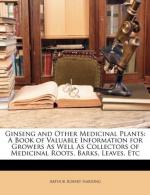|
This section contains 1,458 words (approx. 5 pages at 300 words per page) |

|
Woody trees such as the giant sequoia of California and the blue gum of Australia are among the world's largest organisms. Despite the tremendous bulk of their stems, only a relatively thin layer of tissue between the bark and the wood is actually alive and continues to produce new layers of wood throughout the life of the tree. How the meristematic tissue that produces these layers remains active for hundreds or even thousands of years is one of the major unanswered questions of plant biology.
Meristematic Regions and Growth Patterns of Woody Plants
Plant embryos inside the seed are tiny rudimentary individuals that have the potential to produce the entire adult plant. This potential for growth rests in specialized areas of the embryo called the apical meristems. Upon seed germination, the root apical meristem at the basal end of the embryo starts to grow and to...
|
This section contains 1,458 words (approx. 5 pages at 300 words per page) |

|


